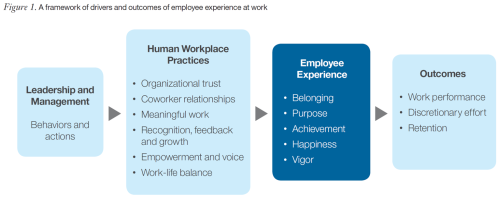
“More positive employee experiences are linked to better performance, extra effort at work, and lower turnover intentions.”
For people who follow my work as a speaker and a writer, this quote may seem familiar. And it’s true. I’ve said variations of this for several years. And I’ve had a range of data sources to back me up. But now, Watson has said it, so it must be true!
My friends at Globoforce and the IBM Smarter Workforce Institute have published a new white paper: The Employee Experience Index. And it’s definitely worth a read – and not just because Watson agrees with me.
Together, Globoforce and IBM have created the Employee Experience Index that should give all those legacy engagement survey data analyses a run for their money. Frankly, I think focusing on “employee experience” rather than “engagement” makes sense. Employee experience is specific, it’s logical, it’s definable. “Engagement” is none of those things. After a broad research study that included literature review and construct identification, construct measurement, and index and driver definitions, they define employee experience as: “a set of perceptions that employees have about their experiences at work in response to their interactions with the organization.” An elegantly simple definition. We can work with this!
And they did: they created a 5-dimension, 10-item index to capture the core facets of employee experience:
- Belonging – feeling part of a team, group or organization
- Purpose – understanding why one’s work matters
- Achievement – a sense of accomplishment in the work that is done
- Happiness – the pleasant feeling arising in and around work
- Vigor – the presence of energy, enthusiasm and excitement at work
These dimensions make so much sense to me. And here is the framework of drivers and outcomes of employee experience at work:
Again, elegantly simple. Note the “Human Workplace Practices.” Not “best practices.” Not “effective practices.” Human practices. Watson is on to something!
This 13 page analysis and report includes findings like the following: Positive employee experience is linked to better work performance, more effort, and retention. And their data supports these conclusions.
This is a terrific report. Download it here. It will give you a perspective on what many call engagement and will give you a context in which to engage your leaders – the folks who set the stage for your employees’ experience.







